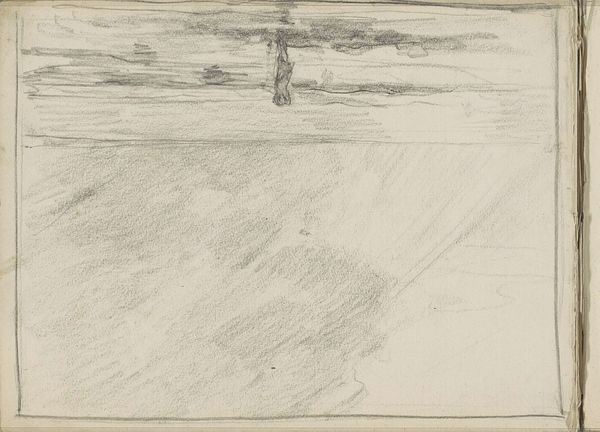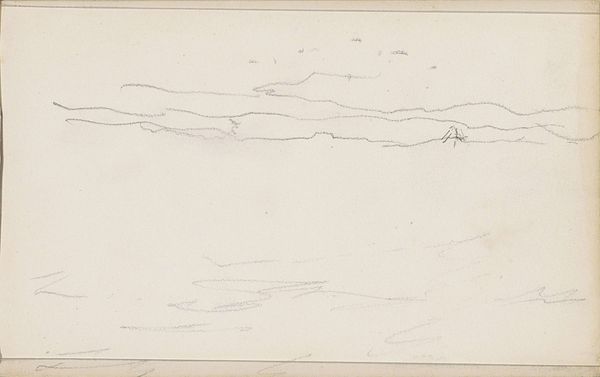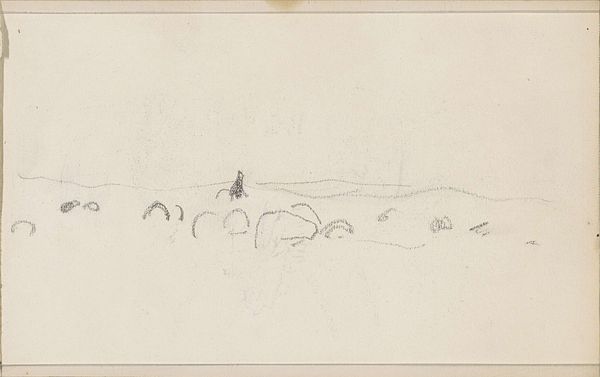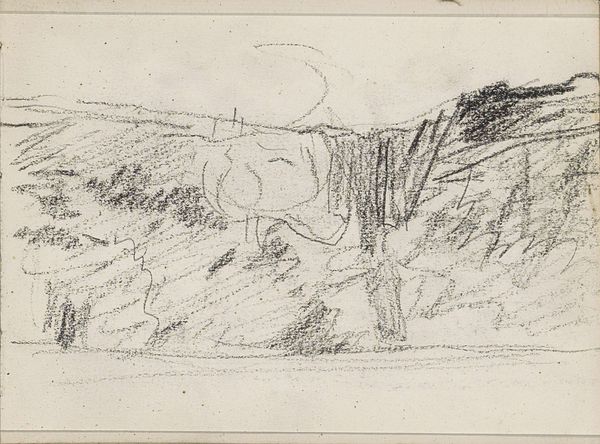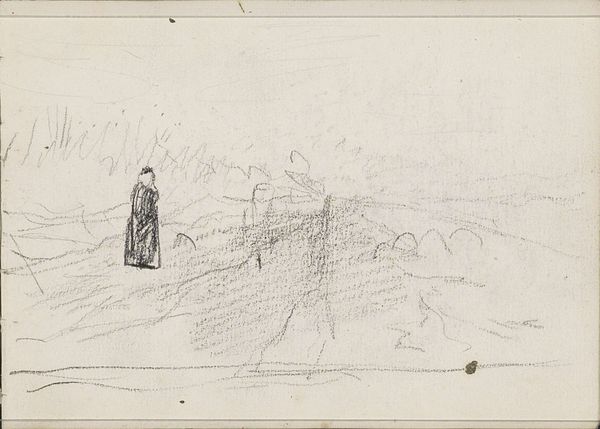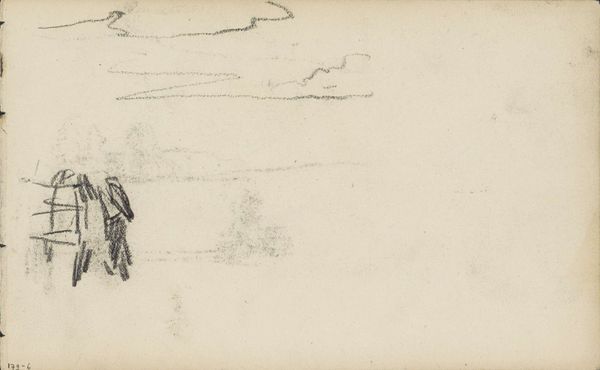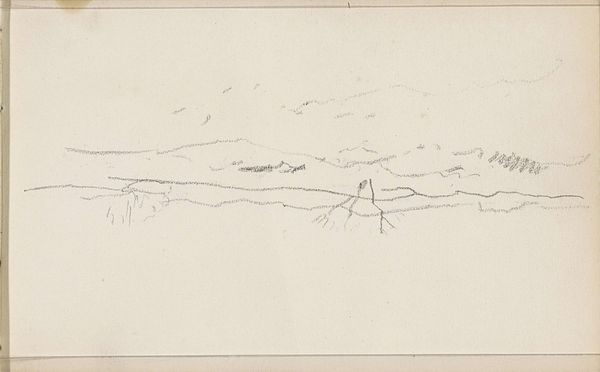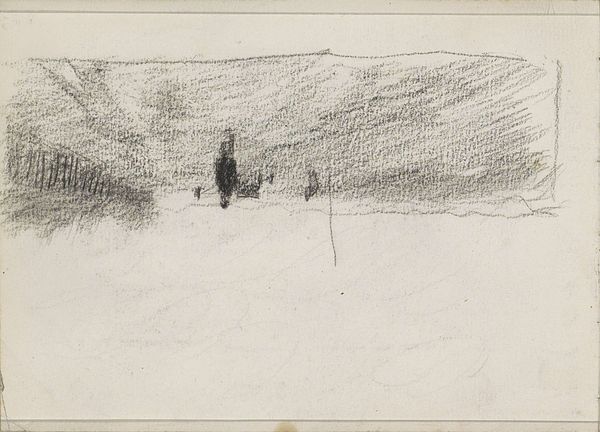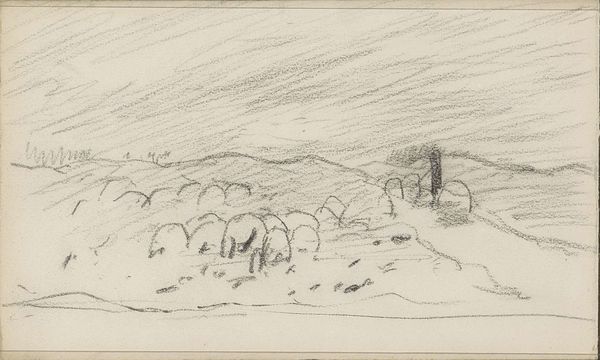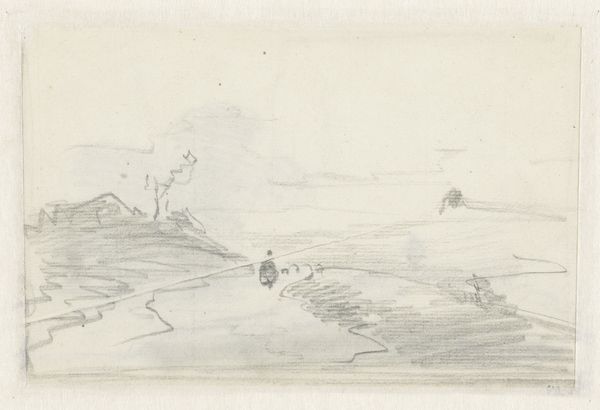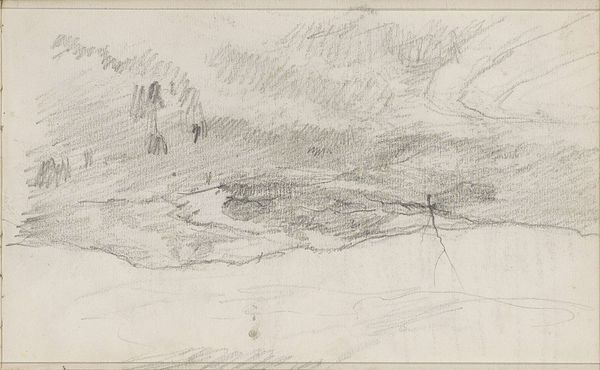
Copyright: Rijks Museum: Open Domain
Curator: Oh, my heart goes a little still looking at this. It's called "Figure in a Hilly Landscape," and it’s from the late 19th century—Anton Mauve created it, a pencil drawing at the Rijksmuseum. Feels like a whisper of a place, doesn't it? Editor: Yes, it does. Sparseness. That's the first thing that comes to mind. And a sort of desolate stillness. There's a loneliness in its simplicity. I think people would have associated it with certain psychological states prevalent in the Romantic era and the Realism movement too. Curator: Exactly! The sketchiness, the light touch…Mauve catches the transient mood of nature, like he is barely there. It’s mostly atmospheric. What do you make of the human presence in this…scene? Is it about the figure itself? Editor: The figure *is* small, but perhaps deliberately so. Look at where it is positioned: near the composition’s center, with a bird. To me, the drawing gestures toward a set of beliefs about humanity’s relationship with nature, both social and spiritual. Nature wasn’t seen as something that needed ‘fixing’. People were becoming disenchanted by modernisation, industrialization, and urbanization; the country represented retreat, freedom and even health! The Dutch Golden Age artists such as Anton Mauve turned landscape into something monumental and significant. Curator: Oh, absolutely! And it’s not just any figure, but also one positioned…facing away from us. We cannot know who they are and what is making them watch. This drawing really encapsulates a Romantic sensibility, but rendered with realist restraint. There's a sort of... quiet acceptance of things as they are. There’s a beauty here that doesn’t need fireworks to make itself known. Editor: Yes. Mauve provides us a meditation on the everyday rather than escapist fantasies. Curator: Makes you wonder what filled Mauve’s mind as he etched this onto paper. It's less about making a grand statement and more about noticing—really, deeply noticing—the world around him. And offering that, as a gift, to us. Editor: Absolutely. A reminder of beauty, in a moment of quiet observation. The fact that we're discussing it here, centuries later, demonstrates that indeed landscape still resonates.
Comments
No comments
Be the first to comment and join the conversation on the ultimate creative platform.
